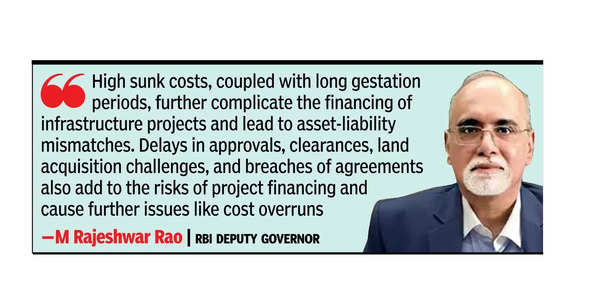The governor’s statement comes at a time when RBI has proposed new norms requiring banks to set aside an additional provision of 5% of the loan amount, compared to the current requirement of 0.4%.The new rule, if implemented, would make project financing much more expensive. The deputy governor was speaking at an infrastructure seminar organised by the National Bank for Financing Infrastructure and Development (NaBFID).

“High sunk costs, coupled with long gestation periods, further complicate the financing of infrastructure projects and lead to asset-liability mismatches. Delays in approvals, clearances, land acquisition challenges, and breaches of agreements also add to the risks of project financing and cause further issues like cost overruns,” Rao said. He noted that infrastructure projects depend on each other, making financing complex. Delays or issues in one project can affect others, so success relies on well-coordinated planning and execution.
Rao added that over the medium term, NaBFID should plan for self-sustainable operations and not rely on “continuous govt support” or regulatory dispensations. Speaking at the event, M Nagaraju from the department of financial services said that India currently spends 8-10% of its GDP on infrastructure, with three-fourths of that being govt expenditure. “This should change with greater participation by the private sector, and govt will create the necessary ecosystem,” he said.
According to K V Kamath, chairman of NaBFID, RBI’s norms aim to prepare lenders for international standards. “We have to prepare for what the West is doing… for instance, provisions for expected credit losses. This (project finance provisions) is nothing compared to what the ECL provisions will cost,” Kamath said.

